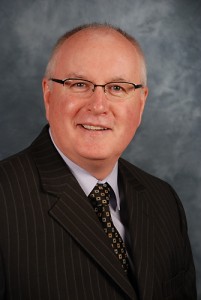Dean’s Corner

One of the gems of our institution is the Dental Clinical Research Center (DCRC), housed in recently renovated space on the main floor. About 25 percent of our full-time faculty are involved in open clinical trials.
This type of research has been and promises to continue to be instrumental in the advancement of dental medicine because it’s a win-win. Patients benefit by receiving the latest, cutting edge therapies while our research faculty gather valuable data for scientific inquiry.
Here are some examples:
- Dr. Martin Freilich is leading a study of bone health and dental implants and Dr. Thomas Taylor is studying short dental implants. Both could lead to a significant increase in the population of candidates for this form of tooth replacement.
- Drs. Douglas Peterson and Rajesh Lalla are researching oral mucositis as they try to come up with ways to reduce side effects from local radiation for head and neck cancer patients.
- Dr. J. Robert Kelly is exploring advances in computer-aided design and computer-aided manufacturing (CAD/CAM) as they relate to ceramic materials such as dental crowns.
- Dr. Effie Ioannidou is studying periodontal status and outcomes for patients with chronic kidney disease.
- Dr. Anna Dongari-Bagtzoglou is studying periodontal disease, gum disease, and transplants.
When the DCRC was formally incorporated as part of the School of Medicine’s General Clinical Research Center (GCRC) in 2003, the Health Center was one of maybe five institutions in the country with a GCRC that had a dental component. Many of the studies today have collaborators from the UConn School of Medicine. That level of collaboration is not very common among dental schools and is a reflection of the UConn School of Dental Medicine’s uniqueness.
Looking ahead, we are in the process of establishing a new Center for Advanced Technology Integration (CATI). Dr. Kelly, who is spearheading this effort, describes it this way:
“Dentistry is facing a huge increase in capabilities involving technology—and not just the automated fabrication of dental parts but also automated diagnosis, record keeping, and even treatment planning. There’s a flood of new capabilities, equipment and business models with no current way to sort out where things are going, what works and what doesn’t. What if, instead of a commercial showroom teeming with sales representatives, we had a neutral academic environment where these technologies could be scientifically compared and where community dentists could be co-participants? Looking toward the future, we can introduce it to the students, and help the dentists in Connecticut adapt to the new technology. People should be turning to us for expertise in this. Academia should be taking the lead in helping to sort that out.”
The philosophy is powered by sociological literature which theorizes that the adoption of innovation is based on peer-to-peer interaction. The advantages are multifaceted. The school is invigorated by exposure to the latest devices and methodologies, we can decide what goes best with our curriculum, and along the way we position ourselves to be recognized as leaders in the advancement of this technology.
Through the development efforts of Dr. Kelly, we are quickly approaching the point where construction of the Center can begin and the vision of CATI realized.
These are exciting times for our dental school and its future.


